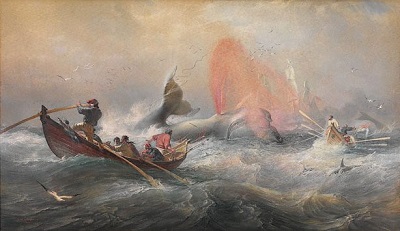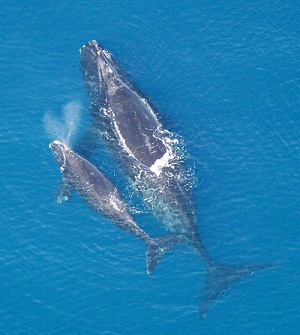Sea Shepherd Heads North in Anti-Whaling Campaign
Chief Executive Officer of Sea Shepherd Global, Captain Alex Cornelissen, has stated that the organization will target whaling conducted by Norway and Iceland in its next anti-whaling campaign.
“Thousands of cetaceans are still targeted for slaughter in the northern hemisphere each year. Norway and Iceland alone have a combined yearly kill quota of over 1,500 whales. This number, which includes 154 endangered Fin whales, is far in excess of the quota proposed by the Japanese government,” says Cornelissen.
Sea Shepherd does not have any current plans to return to the Southern Ocean to engage in further anti-whaling campaigns against the Japanese whaling fleet. “Instead, we will take our fight for the whales from the South, using our Southern Ocean successes to expand our arm of protection to the North. It is here that we can ultimately be most effective, because it is here that we will ultimately save the greatest amount of [animal] lives.”
The whaling controversy has focused on issues of sustainability and conservation as well as ownership and national sovereignty. Also raised in debate is the question of cetacean intelligence and the level of suffering which the animals undergo when caught and killed.
 In the coming months, Sea Shepherd will unveil plans for a North Atlantic campaign. “We will, as always, use direct-action techniques to stop the unnecessary and illegal slaughter of whales and other marine creatures. We will continue to uphold international law; to be soldiers of compassion, dedicated to defending those who cannot defend themselves. And we will continue the fight to protect the precious life in our oceans - the life that sustains our very existence - because we believe that if there's one thing on this planet that's worth fighting for, its life.”
In the coming months, Sea Shepherd will unveil plans for a North Atlantic campaign. “We will, as always, use direct-action techniques to stop the unnecessary and illegal slaughter of whales and other marine creatures. We will continue to uphold international law; to be soldiers of compassion, dedicated to defending those who cannot defend themselves. And we will continue the fight to protect the precious life in our oceans - the life that sustains our very existence - because we believe that if there's one thing on this planet that's worth fighting for, its life.”
Northern whaling
According to the International Fund for Animal Welfare (IFAW) Norway sets its own quota for the number of whales its whalers are permitted to kill for commercial reasons. This number has gone up, from being allowed to kill 671 minke whales in 2002 to more than 1,000 today. However, in recent years, less than half of this self-allocated catch limit has been taken. Norway is now hunting a higher proportion of breeding females which could put the long-term survival of minke whales in the North Atlantic in severe danger, says the organization.
Like Japan, Iceland initially conducted a scientific whaling program, says IFAW. In 2006, Iceland resumed commercial whaling, targeting minke and fin whales. In 2010, Icelandic whalers killed 148 endangered fin whales and 60 minke whales.
Top 10 Whalers
 IBTimesUK listed the top 10 whaling countries in an article last year:
IBTimesUK listed the top 10 whaling countries in an article last year:
1. Japan
2. Norway
3. Iceland
4. Greenland
5. Canada
6. U.S.
7. Russia
8. South Korea
9. Faroe Islands
10. Saint Vincent and the Grenadines
Much of this whaling is the continuation of historic, cultural practice and the need for food. Some have criticized anti-whaling thinking: “Less reflective carnivores protesting the cruelty of whaling need to look more closely at factory farming methods that deliver cheap animal protein to their dinner plates, at often appalling costs to animal welfare,” said one Japanese spokesman.
The fight with Japan will continue
Sea Shepherd has opposed the Japanese government's illegal slaughter of whales in Antarctica since 2002. In 2014, the United Nations International Court of Justice, the highest international court, handed-down a decision in a 12-4 majority. The Court ruled that JARPA II was, in fact, an illegal, commercial operation and, therefore, ordered that it immediately cease.
 “In spite of the decision, Japan vowed to return to the Southern Ocean to continue its lethal hunt under a newly designed whaling program, titled NEWREP-A. The new program, it claimed, would satisfy "scientific" requirements specific under the International Convention for the Regulation of Whaling, says Cornelissen.
“In spite of the decision, Japan vowed to return to the Southern Ocean to continue its lethal hunt under a newly designed whaling program, titled NEWREP-A. The new program, it claimed, would satisfy "scientific" requirements specific under the International Convention for the Regulation of Whaling, says Cornelissen.
“However, key elements of NEWREP-A indicate that the program is also focused on limiting Sea Shepherd's capabilities - a sure sign of our effectiveness,” he says.
“Specifically, NEWREP-A includes an expanded hunting area, twice the size of that designated under JARPA II, aimed to make it more difficult for Sea Shepherd to locate the whaling fleet; a transferable and compoundable quota, meaning that the lives of whales saved by Sea Shepherd in any year could be transferred and added to the quota of the next; and a commitment not to engage with Sea Shepherd, thereby reducing any opportunity to draw international attention to the proposed yearly whale slaughter.
“But NEWREP-A has failed its first test. On Monday April 13, an expert panel of the International Whaling Commission (IWC) rejected the plan, stating it lacked the data required to legitimize it as science. While the final judgement on NEWREP-A will be made by the Scientific Commitee of the IWC when it meets in May this year, the wheels of public sentiment, of international law, and of scientific reasoning are all turning against the continuation of Japan's whaling program in the Southern Ocean.
“Every attempt made by Japan to legitimize the on-going slaughter of whales in Antarctica is meeting fierce resistance. We do not expect Japan will return to the Southern Ocean to kill whales, but if it does, we trust that the international community will act appropriately to stop this blatant violation of international law.”
